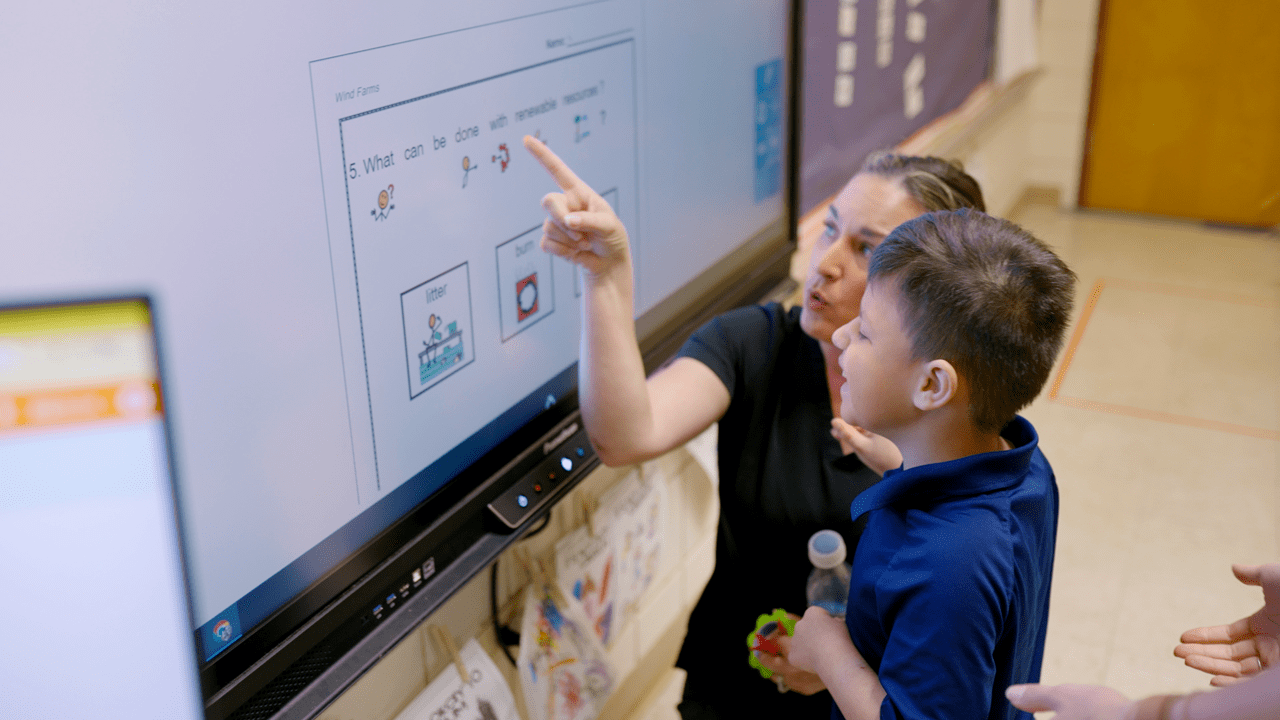IEPs can quickly become complicated with legally mandated components, multiple steps, meetings, and collaboration across a range of team members. And the need to deliver rigorous, standards-based and engaging instruction that aligns with IEP goals puts even more pressure on classroom teachers.
Unique Learning System provides comprehensive and current academic learning materials for all core subjects and life skills for students from pre‑K through transition. With age-appropriate, standards-aligned instruction, Unique Learning System includes multiple data points that demonstrate measurable growth. Data also helps educators develop comprehensive PLAAFPs and accurate IEP goals to demonstrate that students are progressing on their path to independence.
Here are 4 ways Unique Learning System helps develop the foundation of an IEP
1. Developing the Present Level of Academic Achievement and Functional Performance (PLAAFP)
As you begin drafting an IEP, your team collaborates on the PLAAFP (also referred to as Present Level of Performance, or PLOP), a crucial part of the document. This vital part of the IEP should be based on current, ongoing assessment data to provide a clear picture of the student’s abilities and progress. A compliant PLAAFP is the backbone of the IEP, and should include clear goals and be well-written and student-focused. To learn more about writing comprehensive PLAAFPs, read our blog article.
Goals, Preferences, and Skills

Unique Learning System’s Goals, Preferences, and Skills (GPS) provides online assessments to determine a clear view of students’ present levels of performance. Automated data collection is time-saving and efficient, making progress monitoring manageable for special education teachers. The GPS provides data through benchmarks, pre- and post-checkpoint assessments, and student daily performance data on various academic skills, allowing teachers to gather a plethora of information about students.
Assessments are completed in targeted skill areas to provide data in reading, writing, math, transition, and emerging skills for grades pre‑K through transition. Unique Learning System tracks student performance data daily as learners work on activities within monthly units. Teachers can see accuracy, participation, and interaction data in real-time and add observational notes to provide additional clarity on student performance. Skill tracking allows teachers to compile more data directly related to a student’s IEP goals within Unique Learning System. This data can be tracked for individual students or specific groups of students.
Transition Passport and Core Rubrics

Unique Learning System also provides a Transition Passport that helps students create a plan for their future, highlighting each learner’s abilities, strengths, and goals. Once the Transition Passport is complete, students have a post-graduate resource to assist them throughout their transition beyond schooling to promote independence and success in life. Core rubrics encourage independence for all ages in targeted areas needed for independence, such as employability, communication, self-advocacy, daily living, and social strategies.
2. Identifying the Goals and Objectives
To ensure a student is progressing on their path to independence, writing goals that are specific, measurable, attainable, relevant, time-based (SMART), and aligned to state standards is vital.

The alignment tools provided by Unique Learning System help teams identify appropriate goals that meet the student’s skill level and state standards. For example, Unique Learning System matches every teaching style with flexible options that allow educators to teach on their schedule or use the automated lesson planning tool with built-in differentiation plus unmatched point-of-use standards alignment.

Student performance data provides teachers with additional data every day, with the ability to add observational notes that highlight information about the student, schedule, or nuances of the classroom that could impact scores and performance. Now, IEP teams can better identify and evaluate areas of need for each unique learner, all in one place. Plus, with Unique Learning System, writing data-driven SMART goals and objectives is manageable, which leads to attainable and measurable student outcomes.
3. Aligning Lessons with the Standards
Every Student Succeeds Act (ESSA) mandates that students receive instruction tied to their grade-level standards. For those with unique learning needs who are not working at grade level, achievable but ambitious goals must be written to help close gaps. This task requires careful input and analysis to meet the student’s needs and legal requirements.

Unique Learning System provides specially designed instruction with organized instructional activities through content, methodology, and delivery of instruction that meets the needs of unique learners. In fact, Unique Learning System’s instructional tools provide alignment documents for all 50 states’ standards. All lessons include instructional targets that can be exported to share lesson plans that ensure compliance with relevant standards and regulations. These resources and tools help teachers deliver age-appropriate, differentiated, achievable, engaging, and standards-aligned lessons.

With lesson plans, activities, differentiated materials, books, assessments, and multiple units of instruction already adapted with assistive technology and augmentative communication tools, all lessons and accompanying activities are designed to be appropriate for the student’s chronological age. Teachers can plan and deliver their lessons directly from Unique Learning System to meet the needs of all their students and implement their IEPs with fidelity. Plus, courses in science, social studies, and math enrich instruction and provide supplemental standards-aligned materials.
4. Monitoring Progress

Progress reporting for each student comes from multiple sources and covers many areas of the learner’s educational needs. Reporting on student progress ensures fidelity while facilitating accountability and compliance throughout the IEP process. Teams can save valuable time using a centralized data collection and analysis system.

With Unique Learning System, teachers have access to data, including regular, monthly checkpoints to assess content knowledge and benchmark testing that can be repeated as needed. Educators also have access to student daily data that provides work samples, performance reports, and course reports. Plus, group and individual skill tracking give teachers insight into how learners are progressing.
Unique Learning System and Polaris are a powerful combination

Together, Unique Learning System and Polaris, n2y’s revolutionary IEP development solution, empower teams to identify, capture, and evaluate data to improve academic rigor while supporting compliance and efficiency. Unique Learning System’s data automatically syncs with Polaris, which provides real-time progress monitoring and reporting that informs instructional decisions to support student-centered, data-driven IEPs.
Combining the power of Unique Learning System and Polaris allows the IEP team to assess instruction using real-time data, leading to increased student success. Together, the solutions help teams ensure PLAAFPs are data-informed, IEP goals are actionable, and learners are achieving and progressing. Unique Learning System and Polaris enable IEP teams to work more productively and collaboratively for the betterment of all students!



